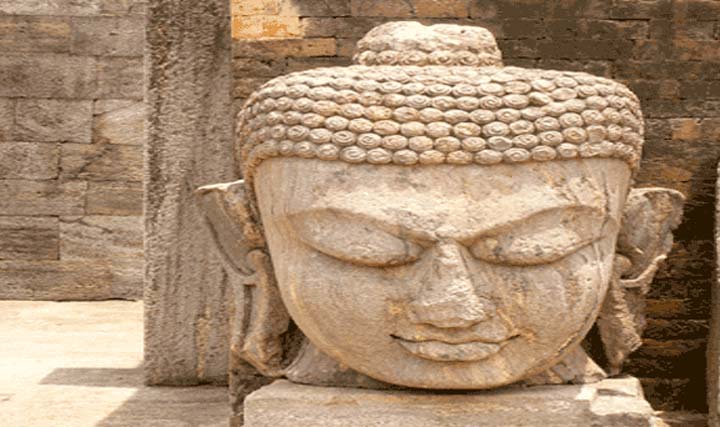Bhubaneswar: Despite being a treasure trove of ancient Buddhist heritage, Odisha appears to be missing out on the significant benefits of the Government of India’s nationwide Buddhist Development Plan.
While the Ministry of Minority Affairs is actively funding such projects across the country, it has yet to receive a comprehensive project proposal from the Odisha government, raising concerns among tourism stakeholders and Buddhist scholars alike.
While Rs.225 Crore has been for 38 projects in Buddhist Development Plan, under the umbrella of the Pradhan Mantri Jan Vikas Karyakram (PMJVK), it seems Odisha has not formulated any proposal on Buddhist Sector to rope in funds from Government of India.
Odisha boasts an unparalleled legacy of Buddhism, evident in its “Diamond Triangle” of Ratnagiri, Udayagiri, and Lalitgiri, which house extensive ruins of monasteries, stupas, and sculptures dating back centuries. Lalitgiri, in particular, is revered for the discovery of what are believed to be bone relics of Lord Buddha himself. Beyond the triangle, sites like Dhauli, where Emperor Ashoka famously embraced Buddhism after the Kalinga War, stand as powerful symbols of peace and historical significance.
These sites, with their serene landscapes and profound historical narratives, hold immense potential to attract a large influx of international Buddhist tourists, particularly from East and Southeast Asian countries. However, unlike other prominent Buddhist destinations in India, Odisha’s rich heritage remains largely underutilized due to various challenges, including underdeveloped infrastructure, limited awareness, and a lack of integrated promotional efforts.
The Ministry of Minority Affairs has launched initiatives like the “Buddhist Development Plan” under the Pradhan Mantri Jan Vikas Karyakram (PMJVK) to promote Buddhism and address socio-economic disparities in minority concentration areas.
This plan offers substantial financial assistance for various projects, including the construction of hostels, classrooms, and training centers, as well as the repair and restoration of ancient monasteries and heritage buildings. The Ministry of Tourism also complements these efforts through schemes like “Swadesh Darshan” and “PRASHAD” for tourism infrastructure development.
While the Odisha government has expressed its commitment to revamping all Buddhist heritage sites, including Dhauli, and the Union Budget 2025-26 also hinted at a boost for Buddhist sites and homestay plans in the state, the crucial step of submitting concrete project proposals to the central ministries seems to be pending. Industry experts lament that the lack of proactive engagement by the state government in formulating and submitting detailed plans is preventing Odisha from tapping into the available central funding and integrated national and international Buddhist circuits.
“Odisha has a unique story to tell, a powerful connection to the very origins of Buddhist thought in India,” remarked a senior tourism official who preferred anonymity. “But unless we actively present well-researched and viable projects to the central government, we cannot expect to reap the benefits of their ambitious development initiatives.”
Developing better connectivity, hospitality facilities, skilled multilingual guides, and robust preservation efforts are crucial for Odisha to truly leverage its Buddhist heritage.
With a renewed focus and timely submission of proposals, Odisha can finally take its rightful place on the global Buddhist tourism map, attracting pilgrims and tourists from around the world and significantly boosting its local economy.
The ball, it seems, is now firmly in the state government’s court to transform its immense potential into tangible progress.


